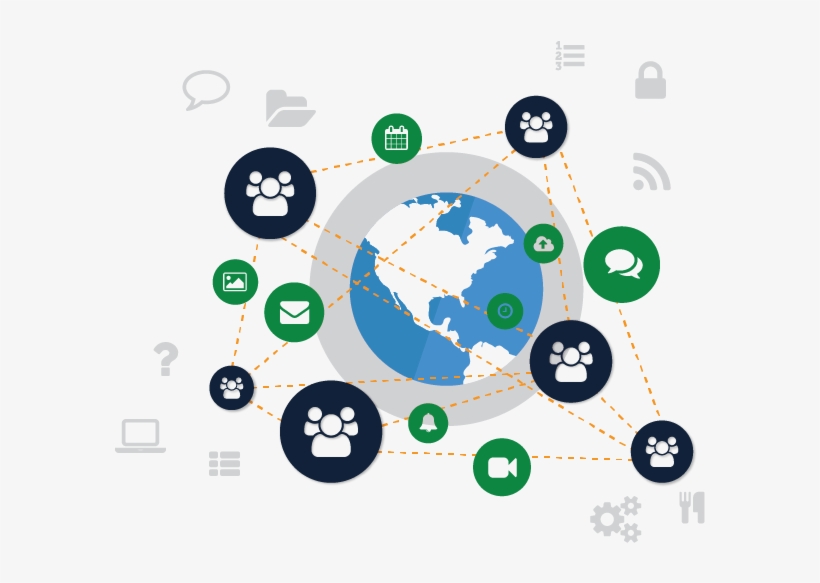Different Types of Visual Communication
Visual communication is basically described as communication through the use of visual aids. It is communication through means that can be seen read or looked upon. Visual communication relies heavily on aspects of vision. It is represented mainly in diagrams that are two dimensional such as graphs and charts. It is the most effective method of communication available. Types of two dimensional images represented by visual communication include; drawings, pie charts, industrial design, animation illustration, animation color and electronic sources. In the modern age there are tools that aid the process of visual communication for people that are far apart from each other. These include video conferencing solutions such as ezTalks.
Visual Aids
Visual communication is done through visual aids. Visual aids are essential because they help the audience understand the information being put across. They can do a large role in convincing the audience being addressed. There are different types of visual communications used in business and they all depend on the use of visual aids. The type of visual aid being used in a presentation varies on the content being passed. The visual aids range from making PowerPoint presentations to fliers and handouts. Each type of visual aid has its pros and cons and the speaker has to really weigh them before choosing one. The different types of visual communication include:

5 Different Types of Visual Communication
1. Objects
This is used especially in instances where you are talking about a mobile object. It involves bringing the object in question to the stage and using it for demonstration as you are putting across your message. It is a suitable visual aid because the audience being addressed can clearly see exactly what you are talking about. For example if you are giving a talk to campers about tying excellent knots, bringing a rope along could be a powerful visual aid.
The advantage of this is the object that you are speaking about is often the center of discussion. So it would definitely be the most suitable object to help the audience understand the message fully.
The disadvantage is some objects are just impossible to get on the stage due to their size or immobility.
2. Models
These are representations of the objects the speaker is addressing. They represent the object on a much smaller scale especially for object that are too large or largely immobile. An example of a model is the model of the solar system that most science teachers use to teach about the solar system or a model of the human skeletal system.
The advantage is the models can serve as perfect representations of objects that are impractical for the speaker to bring on stage with them. This will enable the audience to fully comprehend the message.
The disadvantage of models is they may not represent the actual object accurately as the proportions may be off. It can be hard to relate the size of the model of the solar system to the actual size of the solar system.
3. Graphs
Graphs are an important visual aid when showing the relationship between two different quantities. There are numerous types of graphs including line graphs, bar graphs and pie graphs.
The major advantage is the graph allows the audience to fully comprehend the differences in quantities as opposed to just stating them verbally. This creates a bigger impact.
The biggest disadvantage with graphs is they can easily get crowded by inputting a lot of information in them. This will give it a cluttered look that makes it hard to comprehend.
4. Maps
In a geography speech, a map would be the most suitable item to use. A map can be used in showing different locations in the region and comparing them. This makes the audience know exactly where the speaker is referring to.
The advantage of using a map is it is simple to understand and can be used to make points of geographical reference. A map, for example, can be used to show the locations of all the hospitals in an area or the number of people with STIs in a certain region.
If a map has too much information on it, it may become cluttered therefore removing the focus of the audience from the message you wish to pass on. They will simply become distracted.
5. Photographs
Their main advantage is they are great tools to explain points. For example in giving a talk about slums, pictures about the slums can give an accurate description of the slum lifeA photograph, if too small, will only serve as a distraction.
These are the platforms on which visual aids can be projected. They vary from the simplest methods to the most sophisticated. They include:
• Whiteboards or chalkboards for writing and drawing;
• Posterboards for posters;
• Handouts for displaying pictures;
• Projectors;
• Computer assisted presentations Conclusion.
Visual communication is the most effective means of communication as it involves vision. Many people can easily comprehend communication that they can see. The most important aspect of visual communication is visual aids that increase comprehension of the subject matter.
